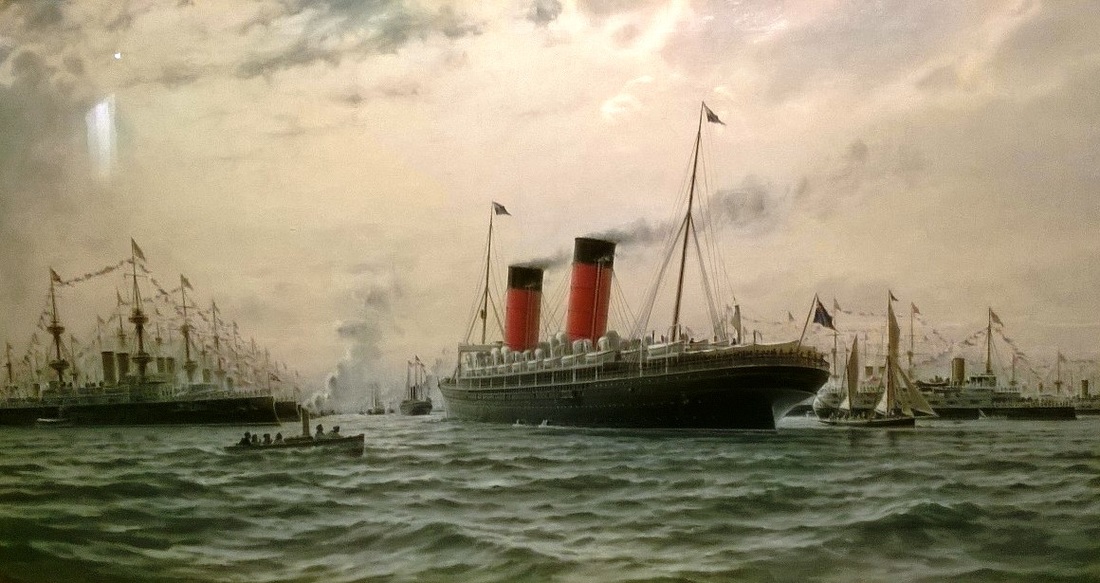GRT = 12,950
Built by the Fairfield Shipbuilding & Engineering Co. at Goven, Scotland she was 189.6m,long with a 19.9m beam and 9m draft. She was laid down in September 1891, launched in September 1892 and undertook her maiden voyage on 22 April 1893.
Installed power was 12 double ended Scotch boilers, two five cylinder triple expansion engines (31,000shp) with propulsion provided by twin triple blade propellers. Service speed was 22 knots and she had a a top speed of 23.5 knots.
She could carry 2000 passengers and 424 crew.
Campania served as one of Cunard's major passenger liners until she was superseded in both speed and size by a succession of four-funnelled German liners. The German competition necessitated the construction of replacements for the Campania and her sister ship which came to fruition in 1907 with the appearance of the RMS Lusitania and RMS Mauretania. With the appearance of a third Cunard giant in 1914 the RMS Aquitania Campania was no longer required and her 250th and last planned voyage for Cunard commenced on 25 April 1914. On her return to Liverpool she was chartered by the Anchor Line to undertake voyages from Glasgow to New York but with the outbreak of the First World War she was called up for war duty but proved too old and managed only three voyages before being sold for scrap. Her last voyage as a passenger liner was on 26 September 1914.
Whilst awaiting demolition the Admiralty stepped in and bought her with a view of converting her to an armed merchant cruiser that could carry seaplanes. The conversion was carried out at the Cammell Laird shipyard in Birkenhead. Her interior was completely gutted, and room made inside to store up to 14 aircraft. She was also equipped with eight 4.7" guns.The conversion was completed in 1915 and two weeks later she joined the fleet at Scapa Flow as HMS Campania her task being to send aeroplanes ahead to scout for the German fleet.
After a short period a 49m flight was added to the front of the ship to enable aircraft to take off directly from the ship without being lowered into the water.
Trials following this conversion indicated that the deck was too short, so it was extended to 67m. The alterations required the removal of the forward part of the superstructure, and the first funnel which was replaced by two narrower funnels on each side. The aft deck was also cleared with the aft mast removed so that she could also serve as an Observation Balloon Ship.
She served in the Royal Navy up until 5 November 1918 which was just six days before the armistice was signed, when she was involved in an accident in the Firth of Forth during high winds. Campania dragged her anchor in a sudden squall and at 03:45 struck the bow of the battleship Royal Oak and then dragged along the side of the battle cruiser HMS Glorious. She then began to sink stern first. A few hours later an explosion (presumed to be a boiler) sent her to the bottom.

 RSS Feed
RSS Feed
